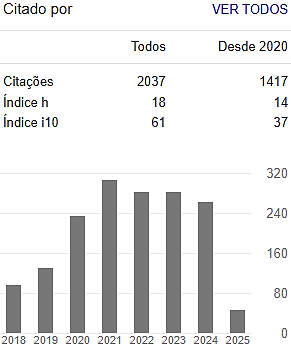SANIDADE DE HÍBRIDOS DE MILHO EM FUNÇÃO DA ÉPOCA DE SEMEADURA, DOSES DE N EM ÁREAS COM E SEM ROTAÇÃO DE CULTURAS
Keywords:
Doenças de colmo, Podridão de espiga, Grãos avariados, Acamamento, Plantio direto, Zea maysAbstract
The crop rotation system, the sowing date and nitrogen availability affect disease pressure on maize. This work was carried out aiming to evaluate the effect of sowing date and nitrogen side-dress rate on stem and grain rot incidence and stem sustainability of maize hybrids with contrasting growth cycle, managed with and without crop rotation. Two field experiments were carried out: the first was set without crop rotation in Lages, SC; the second was set with crop rotation in Atalanta, SC. Two hybrids were tested: AG9025 PRO3 (super-early) and P30F53 VYH (early). Two sowing dates were assessed: preferential (early spring) and delayed (late spring). Four nitrogen side-dress rates were evaluated: 0, 150, 300 and 450 kg of N ha-1. The hybrid AG9025 PRO3 was more affected by stem and grain rots than P30F53 VYH in the late sowing date, especially when it was grown without crop rotation. Nitrogen effect on stem and grain rot varied according to the hybrid, sowing date and experimental place, showing that both the lack and excess of nitrogen may favor maize disease incidence. The increment in nitrogen rate increased stem diameter and ear insertion height in Atalanta, favoring P30F53 VYH stem lodging at the late sowing date.
Downloads
Downloads
Published
Issue
Section
License
Copyright (c) 2019 Colloquium Agrariae. ISSN: 1809-8215

This work is licensed under a Creative Commons Attribution-NonCommercial-NoDerivatives 4.0 International License.

